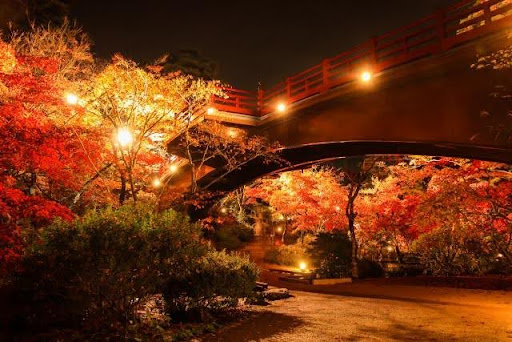
In Japan, beautiful autumn foliage can be seen from October to December, when the trees turn red and yellow. What is the secret behind the popularity of autumn foliage in Japan among people in Japan and abroad?
In this article, we will explain the characteristics of autumn foliage in Japan and introduce three recommended spots that are scheduled to hold autumn foliage light-up events as of July 2024. We also introduce sightseeing spots around the recommended autumn foliage light-up spots, so please use this as a reference to enjoy the autumn foliage season in Japan.
■Three attractions of Japan’s autumn foliage, including its “rich colors
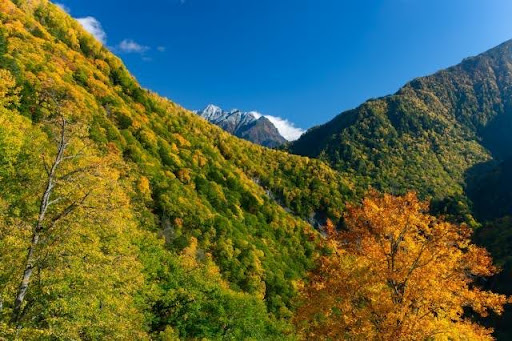
There are three reasons why Japanese autumn foliage is so appealing to people.
・Rich colors of yellow, red, and green
・Beautiful fusion of autumn leaves and historic shrines and temples
・The fantastic atmosphere created when the leaves are lit up, which is different from the daytime atmosphere.
Autumn foliage is a phenomenon that can only be seen in temperate regions of the northern hemisphere. The species of trees that can be seen in the autumn colors are limited to broad-leaved trees, so it can be said that autumn foliage itself is rare.
Only in Japan can one see the rich colors of autumn foliage.
Only in Japan can one see colorful autumn foliage with a mixture of yellow, red, and green. In other countries, there are many areas where there are almost no four seasons and autumn foliage itself cannot be seen, or where there are many coniferous trees that do not fall leaves. Even in areas where autumn leaves can be seen, they are mainly yellow, such as maple trees.
Therefore, it is very rare to see colorful autumn foliage such as red, yellow, and green like in Japan. Another secret of their popularity is the gradation of the leaves, with the color changing near the tops of the mountains and remaining green at the bottom, depending on the elevation of the mountains.
Beautiful scenery blending with historic shrines and temples
If you enjoy autumn foliage in Japan, you should not miss the beautiful fusion of shrine and temple with autumn leaves. Shrines and temples, where you can feel the history and culture of Japan, are often planted with maple trees, ginkgo trees, cherry trees, and other foliage trees. Therefore, during the autumn foliage season, visitors can stroll around the temple grounds and enjoy the historic shrine or temple together with the beautiful autumn foliage surrounding the temple grounds.
There are also some spots where you can view the beautiful autumn leaves in the Japanese garden from inside the temple, allowing you to fully appreciate the atmosphere. In Japan, vermilion bridges are often built near temples and shrines, which look beautiful with the autumn leaves.
Fantastic atmosphere of illuminated autumn leaves
In Japan, you should not miss the illuminated autumn foliage at night. The golden, fantastic, and mysterious scenery is a sight to behold, and is quite different from the refreshing beauty of the autumn leaves during the daytime. When illuminated, buildings such as shrines and temples and colored leaves become more powerful, creating a glamorous scene.
In the autumn foliage viewing spots near rivers and ponds, the beautiful autumn leaves are reflected vividly on the surface of the water when lit up, creating a truly fantastic sight. Be sure to compare the daytime and nighttime illumination.
■The definitive list! Three recommended spots and a model course for viewing autumn foliage lit up at night
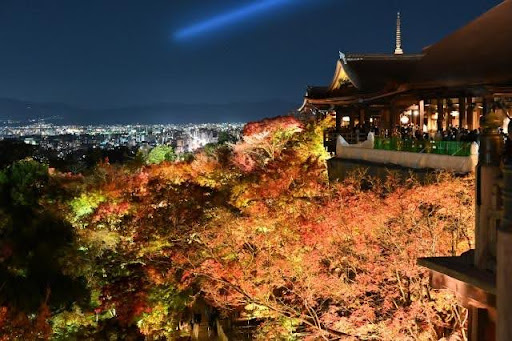
With so many places to see the autumn foliage lit up in Japan, it can be difficult to know where to go. Here are three recommended spots that you should not miss if you want to see the autumn foliage illuminated for the first time in Japan.
・Kiyomizu-dera Temple (Kyoto Prefecture)
・Kenrokuen Garden (Ishikawa Prefecture)
・Nikko Shrine and Temples (Tochigi Prefecture)
Please refer to the model course and the schedule of the autumn foliage light-up in 2024 for more information.
Kiyomizu-dera Temple in Kyoto Prefecture: The solemnity of the illumination of the autumn leaves is like a painting.
Kiyomizu-dera Temple is one of the symbolic temples of Kyoto, and its main hall, located at a height of 13 meters, is famous as “Kiyomizu-no-butai” (the stage of Kiyomizu). Other must-see spots within Kiyomizu-Dera include the Amida Hall, the three-story pagoda, and the main Niomon gate.
Kiyomizu-dera Temple’s autumn foliage illumination offers the following four attractions.
1.The beautiful carpet of red autumn leaves seen from the Kiyomizu-no-butai (stage of Kiyomizu) in the main hall of the temple
2.The view of the city of Kyoto from Kiyomizu-dera Temple is one of the attractions.
3.Kiyomizu-Dera Temple, a national treasure, and the Amida Hall and Niomon Gate, important cultural properties, offer a taste of history all at once.
4.Enjoy the solemn atmosphere of Kiyomizu-Dera, which is enhanced by the lighting up of the temple.
The blue ray of light emitted from Kiyomizu-Dera Temple into the night sky represents the compassion of the Kannon, the Goddess of Mercy.
Next, we will introduce a model course for viewing the illuminated autumn leaves of Kiyomizu-dera Temple.

Heian Jingu Shrine recreates the original appearance of Kyoto when it was first created 1,200 years ago. It is truly a historic shrine that allows visitors to slip back in time to 1200 years ago. Ichinen-zaka, Ninen-zaka, and Sannen-zaka were flourished as the approach to Kiyomizu-dera Temple. There are numerous souvenir shops and places to eat along the streets, so it is a good idea to take a leisurely stroll on the way to Kiyomizu-dera Temple.
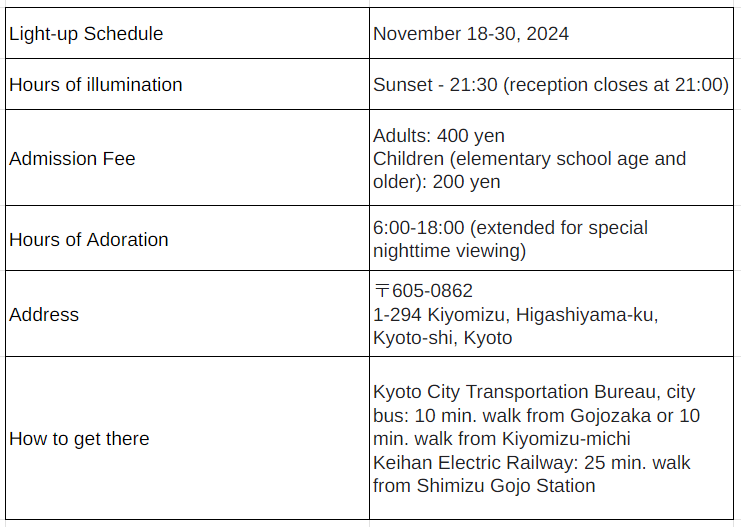
Kanazawa Kenrokuen Garden, designated as a cultural property, is one of the three most famous gardens in Japan, along with Kairakuen Garden in Mito and Korakuen Garden in Okayama.
Kenrokuen Garden is one of the three most famous gardens in Japan, along with Kairakuen Garden in Mito and Korakuen Garden in Okayama. Located in the center of Kanazawa, it is in close proximity to Kanazawa Castle. The garden was created by successive lords of the Kaga domain during the Edo period (1603-1868). The garden is a vast area with ponds, mountains, teahouses, and other facilities that can be toured in its entirety.
Kenrokuen Garden offers the following three attractions when the autumn leaves are illuminated.
1.You can enjoy the garden, which is one of the three best gardens in Japan and a special place of scenic beauty.
2.During the lighting-up period in late autumn, you can also see the view of snow hanging from the trees.
3.The beautiful autumn leaves reflected on the surface of Kasumigaike Pond are also attractive.
In addition, visitors can enjoy the elegant atmosphere of the teahouses inside Kenrokuen Garden and in front of Ishikawa Gate of Kanazawa Castle.
Next, we will introduce you to the model course recommended for sightseeing in Kanazawa and the illumination of autumn leaves in Kenrokuen Garden.
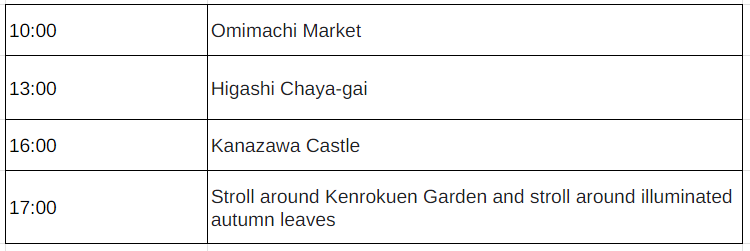
First, enjoy a bite to eat at Omimachi Market, known as the “Citizens’ Kitchen. A 15 min. walk will take you to Higashi Chaya-gai, lined with rows of townhouses with red-lacquered latticework. There are many souvenir stores and restaurants, and a café is also recommended. In Kanazawa Kenrokuen Garden and Higashi Chaya-gai, brides sometimes have their wedding photos taken.
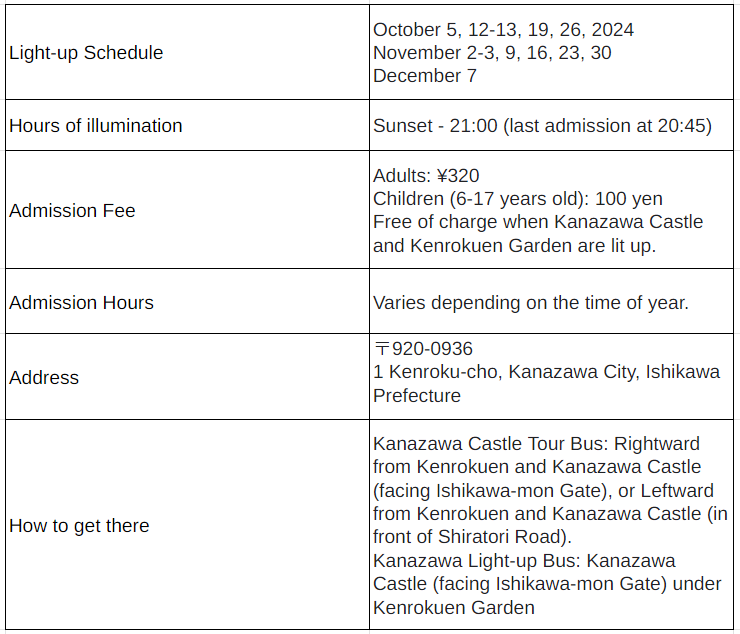
【Tochigi Prefecture】Illuminated Autumn Foliage at Nikko Shrines and Temples is also a Fantastic World Heritage Site
Nikko Toshogu Shrine, Nikko-zan Rinnoji Temple, Nikko Futaarasan Shrine, and other 103 buildings and the surrounding natural landscape are registered as World Cultural Heritage sites. Ieyasu Tokugawa, the founder of the Edo Period, is enshrined at Nikko Toshogu Shrine. Visitors are encouraged to take their time to explore the buildings of Nikko shrines and temples and the surrounding natural environment.
The autumn foliage illumination of Nikko shrines and temples offers the following three attractions.
1.Visitors can enjoy a tour of numerous World Cultural Heritage sites, including Nikko Toshogu Shrine, Nikko-zan Rinnoji Temple, and Nikko Futaarasan Shrine.
2.Nikko Toshogu Shrine enshrines the famous Tokugawa Ieyasu, giving visitors a sense of history.
3.The entire shrine and temples are lit up, and the illumination of the buildings and the autumn leaves is fantastic.
During the autumn foliage light-up, outdoor events and food courts will be held on the grounds of Futaarasan Shrine, adding to the festive atmosphere.
Here is a model course for walking around the area to enjoy the illumination of autumn leaves at Nikko shrines and temples.
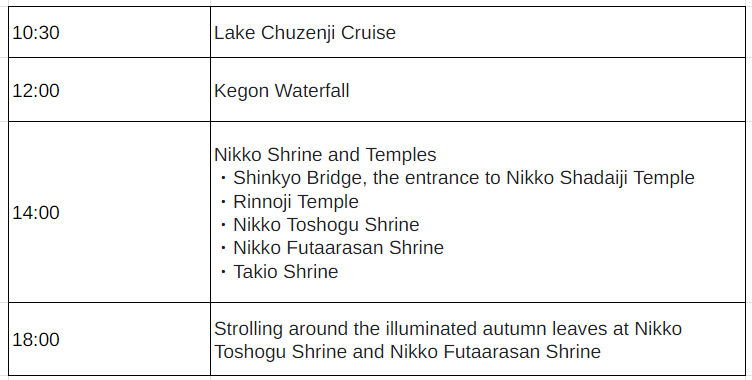
If you take the Chuzenji-ko sightseeing boat around Lake Chuzenji, you can enjoy a panoramic view of the autumn leaves from the boat. There are few restaurants in the Nikko shrines and temples, so it is advisable to eat a meal before entering the temple.

■Summary

In Japan, autumn foliage offers a rich mix of red, yellow, and green colors, and in the mountains, gradations can be seen from the top of the mountain to the bottom. The combination of the autumn foliage with historic shrines and temples is even more beautiful and picturesque. In contrast to the fresh and beautiful autumn colors during the daytime, many spots light up the leaves at night.
At night, beautiful and colorful autumn leaves are illuminated in the night sky, creating a fantastic atmosphere that is different from that of the daytime. We hope you will enjoy your autumn sightseeing in Japan to the fullest in combination with the model courses we have introduced.
【Q&A】
Q1. When is the best time to see the autumn leaves in Japan?
A. Depending on the region, the best time to see the autumn leaves is from October to December. Autumn foliage begins in Hokkaido and Tohoku, which are located at high latitudes, and gradually moves southward. However, even within Japan, the autumn foliage cannot be seen in Okinawa Prefecture because it is located in the tropics.
Q2: What kind of clothing should I wear when going to see the autumn leaves?
A. The autumn foliage can be seen in late fall, when it is chilly, so wear long sleeves and long pants. Also, it is even colder in the mountain areas such as Nikko shrines and temples, so a jacket is recommended.

